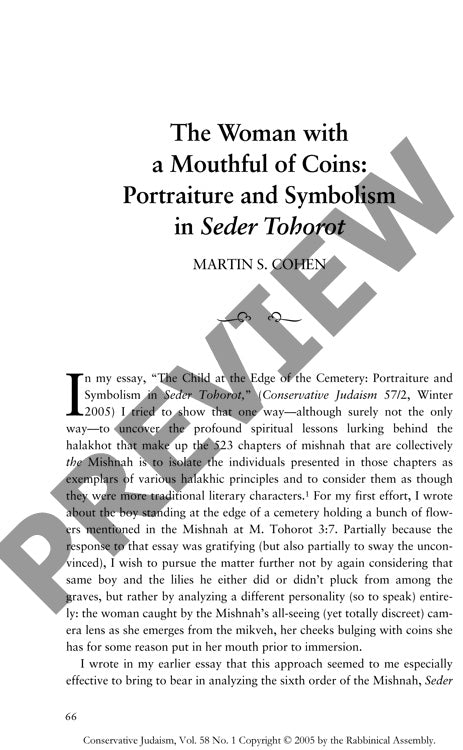The Woman with a Mouthful of Coins Portr
Couldn't load pickup availability
Ancient Jewish law presents a fascinating paradox in the case of a woman who places coins in her mouth before ritual immersion in a mikveh. While this brief Mishnaic passage from Seder Tohorot might seem straightforward, it reveals profound tensions in religious practice and human experience. Through literary-analytical investigation treating anonymous Mishnaic figures as interpretable characters, combined with imaginative reconstruction of the ancient Palestinian setting, a complex spiritual narrative emerges. The woman achieves purification from menstrual impurity (niddah) and may resume marital relations, yet simultaneously becomes contaminated through contact with her own detached saliva rendered impure by the coins. Medieval commentators including Rambam and Meiri highlight how this case exemplifies the intersection of two distinct halakhic frameworks governing menstrual impurity and ritual contamination (tumah). Beyond mere legal complexity, this unnamed woman serves as a profound spiritual exemplar, teaching that authentic religious life sometimes requires embracing halakhic ambiguity and existing simultaneously in contradictory states of purity and impurity. Such paradoxes, rather than representing theological problems, emerge as necessary accommodations to lived experience and generate the spiritual tension essential for meaningful religious engagement in an unredeemed world.

More Information
-
Physical Description
-
Publication Information
Published 2005
ISBN
-
Publication Credits
Martin Cohen

